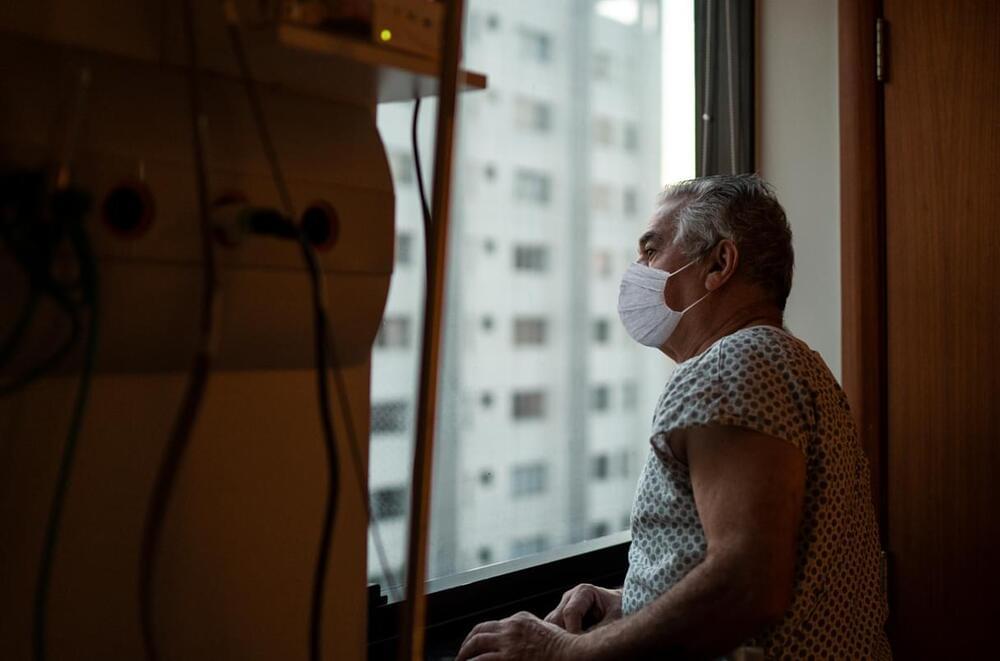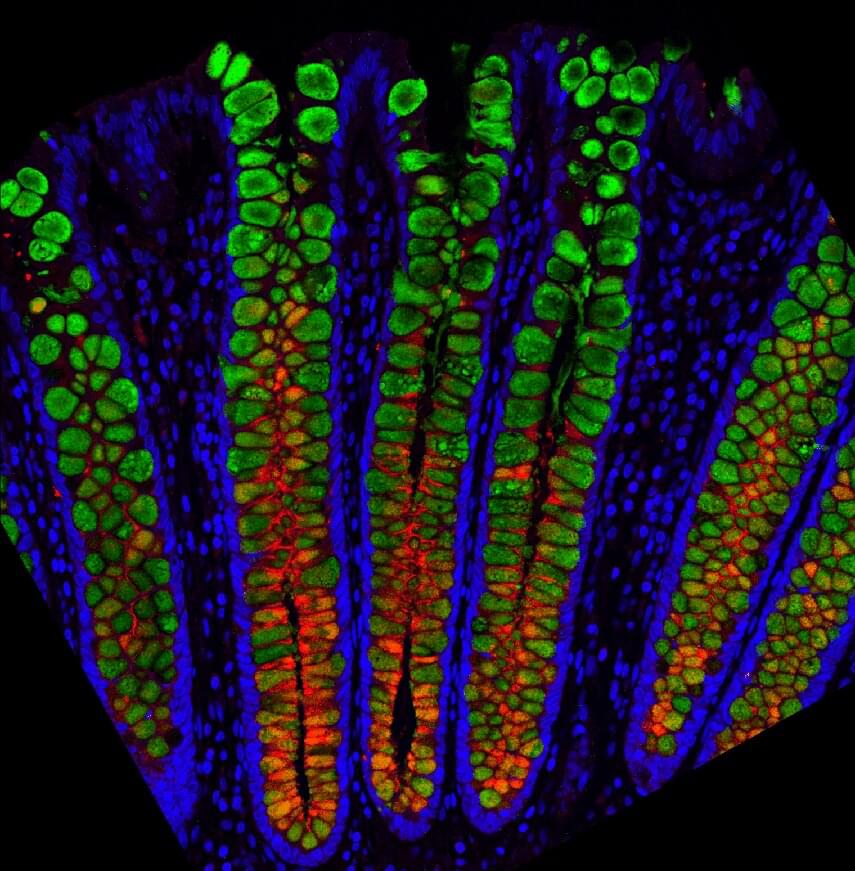Category: health – Page 264

The first controlled study of caloric restriction in humans
Decades of research has shown that limits on calorie intake by flies, worms, and mice can enhance lifespan in laboratory conditions. But whether such calorie restriction can do the same for humans has remained unclear. Now a new study led by researchers at Yale University, Connecticut, confirms the health benefits of moderate calorie restrictions in humans – and identifies a key protein that could be harnessed to extend health in humans.
The researchers used data from the Comprehensive Assessment of Long-term Effects of Reducing Intake of Energy (CALERIE) clinical trial, the first controlled study of calorie restriction in healthy humans. For the trial, they established a baseline calorie intake among more than 200 study participants. They then asked a share of those participants to reduce their calorie intake by 14% while the rest continued to eat as usual, and analysed the long-term health effects of calorie restriction over the next two years.
Vishwa Dixit, Professor of Pathology, Immunobiology, and Comparative Medicine, and senior author of the study, said that his team wanted to better understand what calorie restriction does to the body specifically that leads to improved health. Building on previous studies in mice, he and his colleagues set out to determine how it might be linked to inflammation and the immune response.
Draganfly’s spraying drones reach 500,000-seat sanitization milestone
Draganfly is celebrating a major health and safety milestone with its spraying drones disinfecting more than 500,000 seats using the company’s proprietary pathogen and surface sanitizer technology.
The company’s spraying technology was also implemented ahead of NASCAR’s June 2021 tripleheader weekend at the Nashville Superspeedway and Barrett-Jackson’s March 2021 collector car auction in Arizona.


COVID-19 patients face higher risk of brain fog and depression, even 1 year after infection
A large new study shows people who contracted #COVID19 faced substantially higher risks of neuropsychiatric ailments 1 year later, including brain fog, depression, and substance use disorders.
Dozens of papers have examined the lingering mental health effects of COVID-19, but many have measured conditions such as depression and brain fog only a few months after infection. Now, a giant new study shows people who contracted COVID-19 faced substantially higher risks of neuropsychiatric ailments 1 year later, including brain fog, depression, and substance use disorders. The report, based on millions of people who used the U.S. Department of Veterans Affairs (VA) health system early in the pandemic, is published today in.
“Most of us experienced some sort of mental distress during the pandemic, but this shows that people with COVID-19 had a much higher risk of mental health disorders than their contemporaries,” says senior author Ziyad Al-Aly, a clinical epidemiologist at Washington University in St. Louis and chief of research at the VA St. Louis Health Care system. “It’s a wake-up call.”
Other scientists praise the study’s size. “The scale of … this study sets [it] apart … as well as the quality of the statistical methods used,” says Alex Charney, a neuroscientist and psychiatrist at the Mount Sinai Health System.

Key Protein Identified That Could Be Harnessed to Extend Healthy Lifespan in Humans
Decades of research has shown that limits on calorie intake by flies, worms, and mice can enhance life span in laboratory conditions. But whether such calorie restriction can do the same for humans remains unclear. Now a new study led by Yale researchers confirms the health benefits of moderate calorie restrictions in humans — and identifies a key protein that could be harnessed to extend health in humans.
The findings were published on February 10, 2022, in Science.
The research was based on results from the Comprehensive Assessment of Long-term Effects of Reducing Intake of Energy (CALERIE) clinical trial, the first controlled study of calorie restriction in healthy humans. For the trial, researchers first established baseline calorie intake among more than 200 study participants. The researchers then asked a share of those participants to reduce their calorie intake by 14% while the rest continued to eat as usual, and analyzed the long-term health effects of calorie restriction over the next two years.

Could This Antioxidant-Rich Supplement Be The Key To A Long, Healthy Life?*
Vitamin C has long been known as an essential nutrient for skin health and immune function, but it turns out its antioxidant activity plays a large role in those properties (among others).*.

Wallet-sized device focuses terahertz energy to generate high-resolution images
Researchers have created a device that enables them to electronically steer and focus a beam of terahertz electromagnetic energy with extreme precision. This opens the door to high-resolution, real-time imaging devices that are hundredths the size of other radar systems and more robust than other optical systems.
Terahertz waves, located on the electromagnetic spectrum between microwaves and infrared light, exist in a “no man’s land” where neither classic electronics nor optical devices can effectively manipulate their energy. But these high-frequency radio waves have many unique properties, like the ability to pass through certain solid materials without the health effects of X-rays. They may also enable higher-speed communications, or vision systems that can see through foggy or dusty environments.
The Terahertz Integrated Electronics Group at MIT, led by Associate Professor Ruonan Han, seeks to bridge this so-called terahertz gap. These researchers have now demonstrated the most precise, electronically steerable, terahertz antenna array, which contains the largest number of antennas. The antenna array, called a “reflectarray,” operates like a controllable mirror with its direction of reflection guided by a computer.


Scientists map entire human gut at single cell resolution
If you get nervous, you might feel it in your gut. If you eat chili, your gut might revolt, but your friend can eat anything and feel great. You can pop ibuprofen like candy with no ill effects, but your friend’s belly might bleed and might get no pain relief. Why is this? The quick answer is because we’re all different. The next questions are how different exactly, and what do these differences mean for health and disease? Answering these is much more difficult, but the UNC School of Medicine lab of Scott Magness, Ph.D., is revealing some interesting scientific answers.
For the first time, the Magness lab used entire human GI tracts from three organ donors to show how cell types differ across all regions of the intestines, to shed light on cellular functions, and to show gene expression differences between these cells and between individuals.
This work, published in Cellular and Molecular Gastroenterology and Hepatology, opens the door to exploring the many facets of gut health in a much more precise manner at greater resolution than ever before.